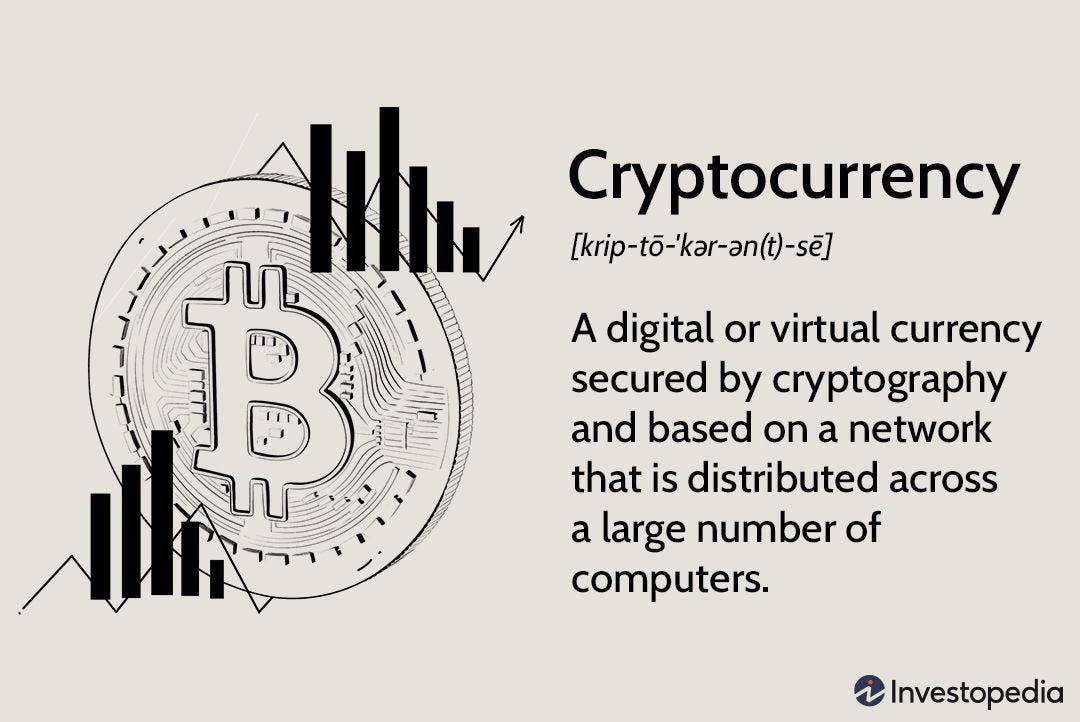Introduction
In recent years, cryptocurrency — digital or virtual money that employs encryption for security — has grown in appeal among the general public.
It is a decentralized type of money that runs without the help of governments or central banks and uses blockchain technology to speed up transactions. Bitcoin, the first decentralized digital money, was launched in 2009, therefore the idea of cryptocurrencies is not new. But it’s only recently that people have started to see the full possibilities of this ground-breaking technology. This blog post will examine the financial landscape of the future and how cryptocurrencies will influence it. We will also give a thorough overview of the world of cryptocurrencies, including their background, operation, and accessible coin varieties. This tutorial will assist you in grasping the fundamentals of this quickly developing technology and its possible effects on the financial sector, whether you are an experienced investor or a total novice.

What is Cryptocurrency and how does it works?
Cryptocurrency, also known as digital or virtual currency, has made waves in the financial industry in recent years. It is a decentralized currency that operates independently of central banks and governments, utilizing blockchain technology to facilitate secure and transparent transactions. The concept of cryptocurrency is familiar; the first decentralized digital currency, Bitcoin, was created in 2009. However, it is only recently that people have begun to truly understand the potential of this revolutionary technology. This blog post will look at the future of finance and the role that cryptocurrency will play in shaping it.

Let’s begin with a brief history of cryptocurrency. Bitcoin’s creation in 2009 signaled the beginning of the cryptocurrency era. Bitcoin was the first decentralized digital currency, and it runs on a peer-to-peer network, allowing for instant and secure transactions without the need for a middleman such as a bank. Since then, thousands of other digital currencies, known as altcoins, have been created, each with its distinct features and applications.
So, how does cryptocurrency function? Cryptocurrency transactions are recorded on a blockchain, which is a public ledger. The blockchain is a digital ledger that is decentralized and distributed across a network of computers. Each block in the blockchain records multiple transactions and is linked to the previous block, forming a chain of blocks. Because each block contains a unique code called a “hash” that confirms its authenticity, this system ensures that transactions are secure and transparent.
One of the most significant advantages of cryptocurrency is its independence from central banks and governments. It is not subject to government regulations or monetary policies, making it a decentralized form of currency. Furthermore, it provides a high level of security and privacy because transactions are recorded on a public ledger while the identities of the parties involved remain anonymous.

Let us now discuss the available various types of cryptocurrency. Bitcoin is the most well-known and popular digital currency, but there are thousands of other coins available, known as altcoins. Ethereum, Litecoin, and Ripple are among the most popular altcoins. Each of these coins has its distinct features and applications. Ethereum, for example, is frequently used for smart contracts and decentralized applications, whereas Litecoin is known for its faster transaction times and lower fees.
Investing in cryptocurrency can help you diversify your portfolio while potentially earning high returns. However, keep in mind that the cryptocurrency market is extremely volatile, and the value of coins can fluctuate dramatically. Before investing, it is critical to conduct research and understand the risks involved. Furthermore, keep in mind that cryptocurrency is not a get-rich-quick scheme; it requires patience and a long-term investment strategy.
Conclusion
to summarize, cryptocurrency is a rapidly evolving technology with the potential to completely reshape the financial industry. It is a decentralized currency that operates independently of central banks and governments, utilizing blockchain technology to facilitate secure and transparent transactions. There are thousands of different coins available, each with its distinct characteristics.

